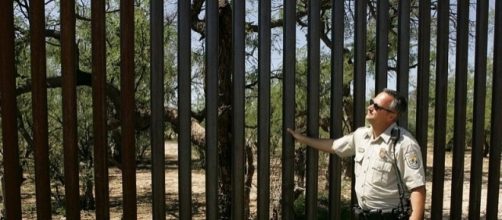Congress has allocated funds to the extent of $20-million towards prototypes for the U.S-Mexico border wall that will be nearly 1900 miles long. According to public records, the construction was supposed to begin in San Diego from this week by Homeland Security. The plan was to take up the construction on four to eight 30-foot tall prototypes and the location was chosen near Otay Mesa.
However, the Customs and Border Protection has revealed that contracts have not yet been awarded even though there were hundreds of bidders.
Incidentally, the $20-million for payment towards the prototypes was diverted from the budget that had originally been earmarked for mobile video surveillance by the Customs and Border Protection
There appears to be confusion
The San Diego Union Tribune reports that as per specifications, the prototypes of the U.S.-Mexico border must be 30 feet tall. It must be designed in such a way that no one can climb it. Moreover, no one should be in a position to dig below the wall for at least 6 feet.
It seems more than 450 companies have responded with proposals to build the wall prototypes and 23 of them are locals from San Diego County. A spokesman of the Homeland Security has confirmed that review of the bids are in progress and the designs are expected to be selected for construction in summer 2017.
There is no clarification provided on a number of points like the reasons for delay or possible dates when bids would be awarded or if San Diego will remain the starting point. The idea of a solar wall that is promoted by President Trump is another new development that needs to be reviewed.
Lawsuits are involved
There are at least two lawsuits on the U.S.-Mexico border wall that are to be resolved by the Homeland Security for work to progress.
One of the lawsuits is about the Tohono O’odham Nation – the territory of this nation in Arizona and Mexico would be separated by the wall. This has been filed by a watchdog group of Washington, D.C. and it has raised other issues related to the border wall.
The second lawsuit was by the Center for Biological Diversity which is a national environmental group.
It wants access to public records that will reveal whether any environmental impact analysis has been carried out as preparatory work to build prototypes of the border wall in San Diego. The argument is that one of the areas identified is the Otay Mountain and this location is home to a number of vernal pools that are natural habitat to endangered and threatened species of butterflies and shrimp.


